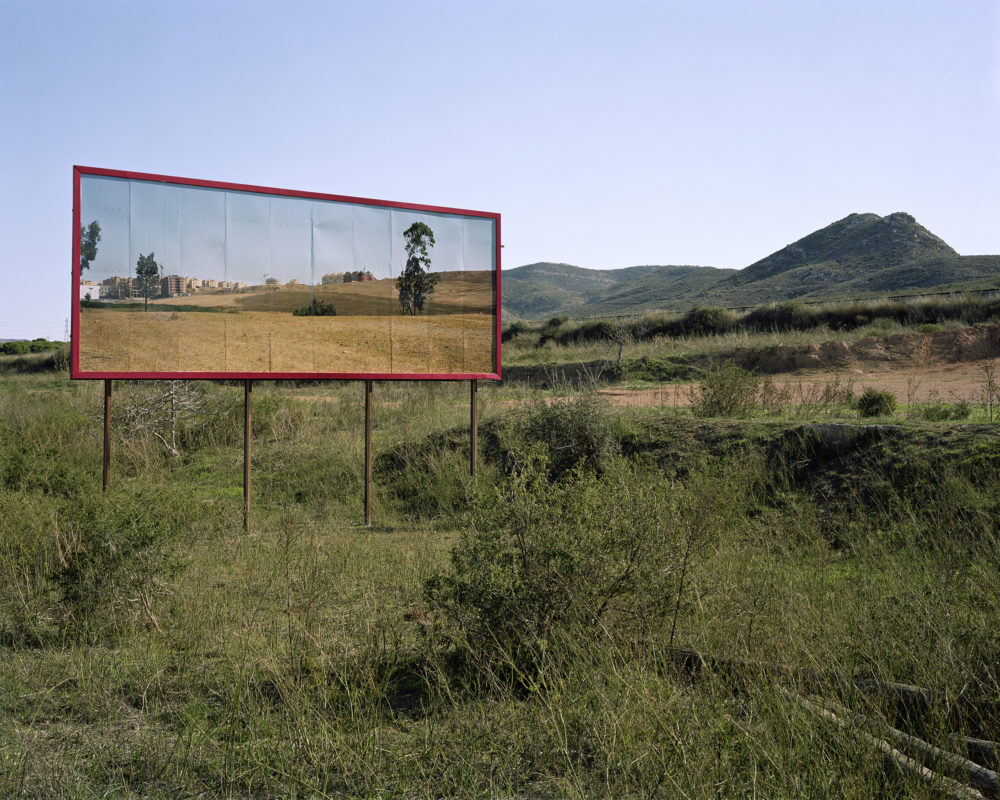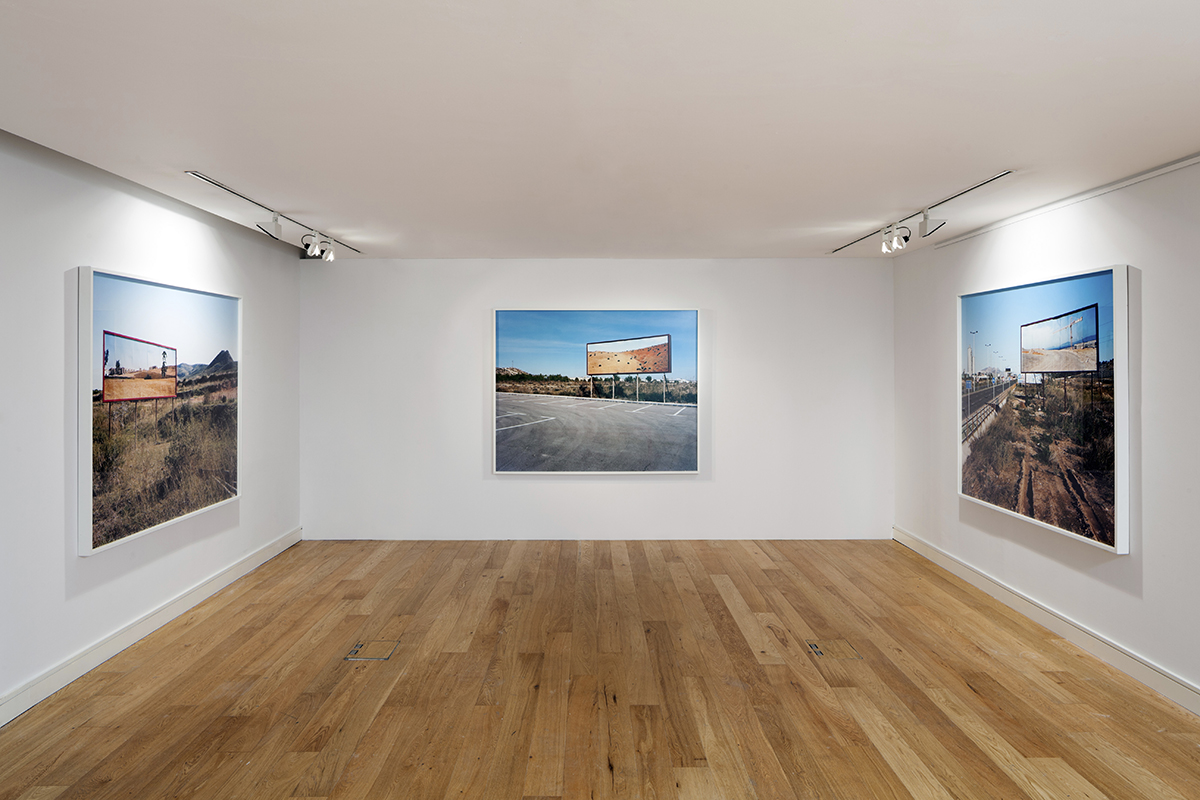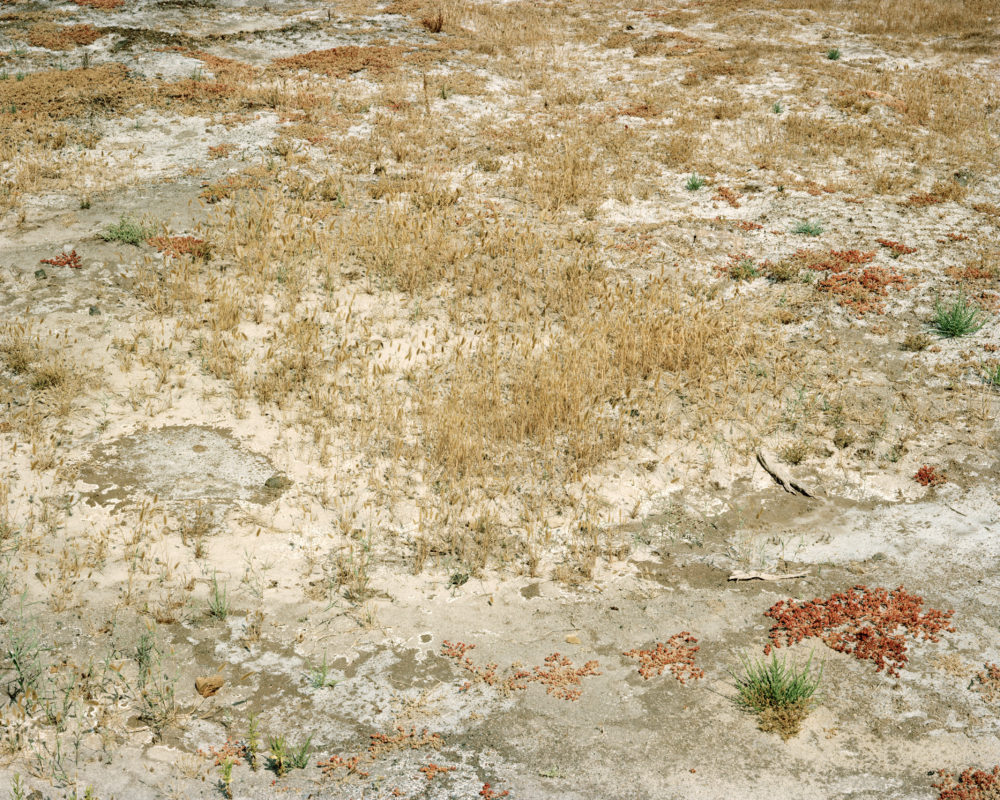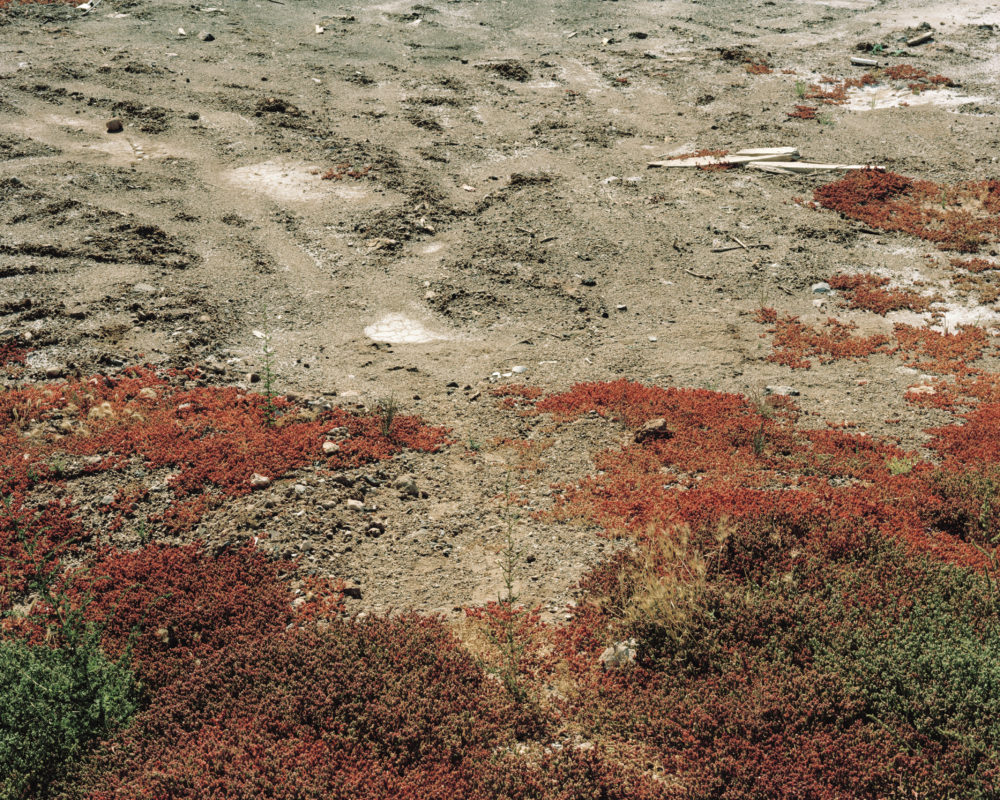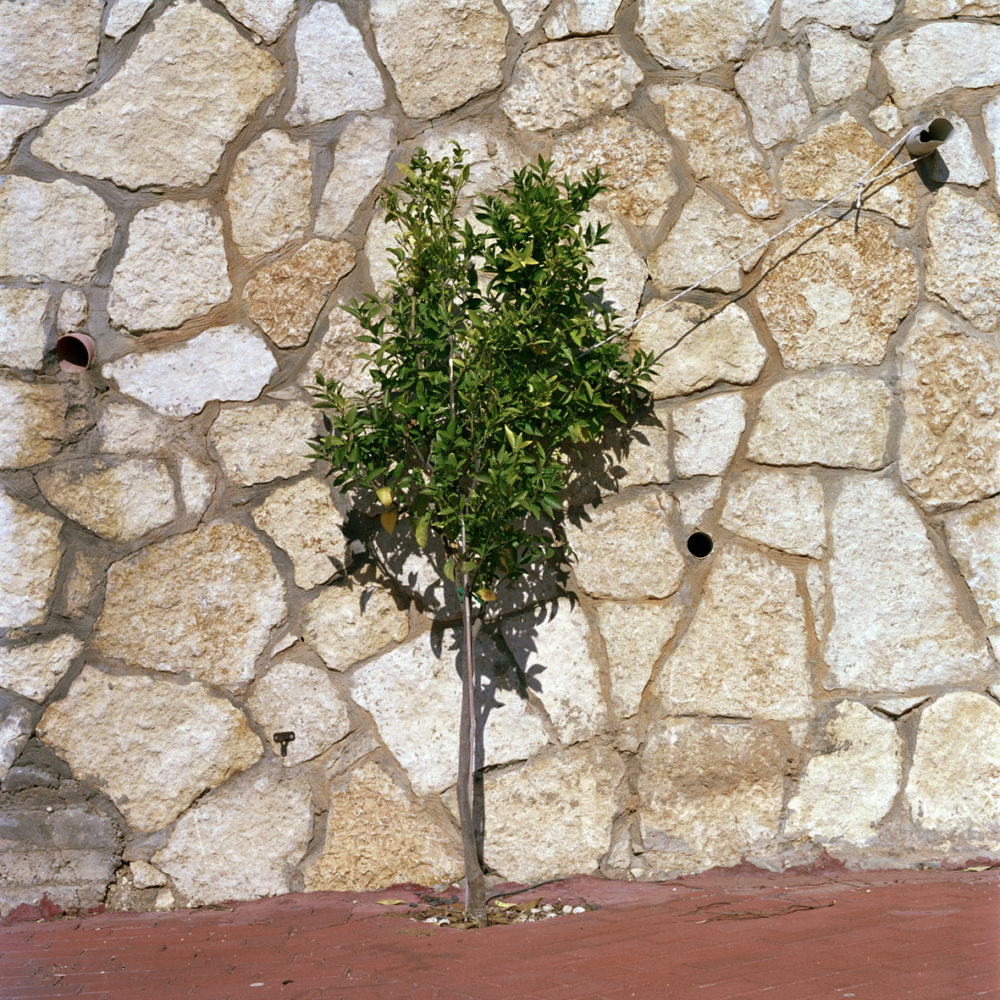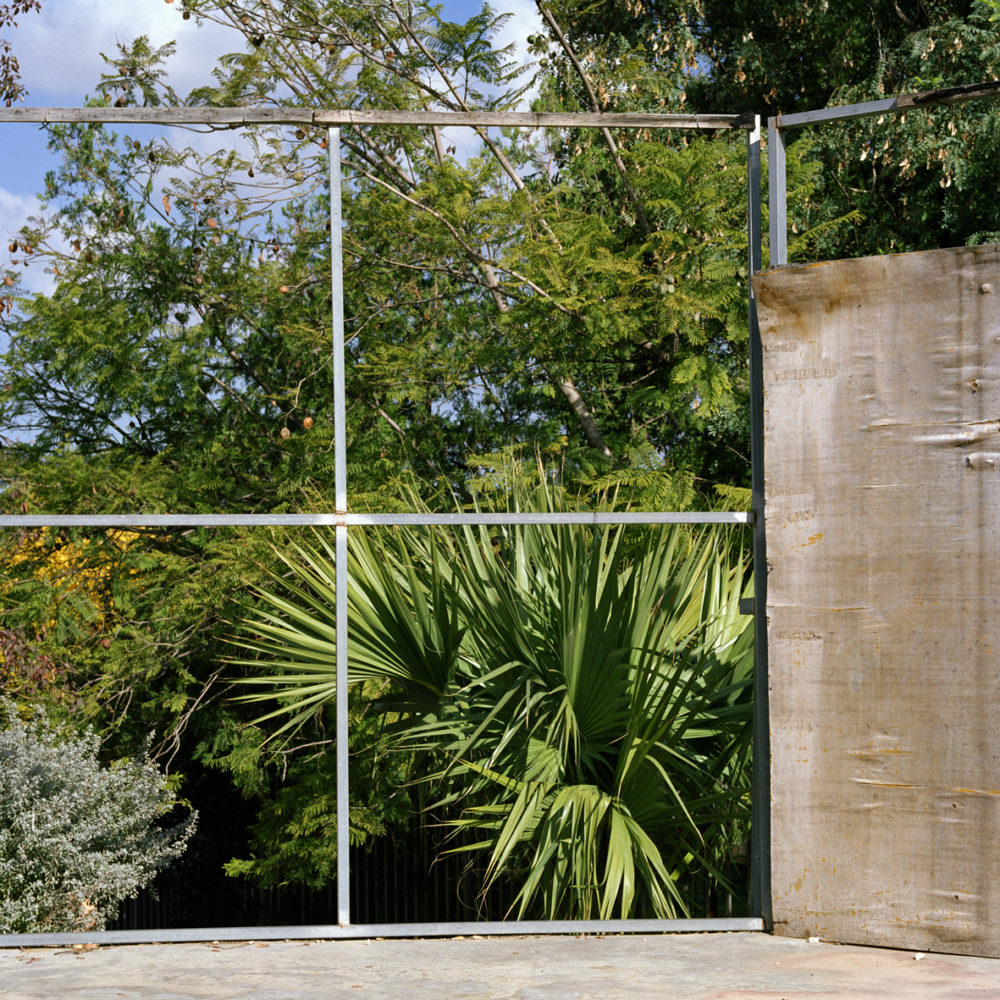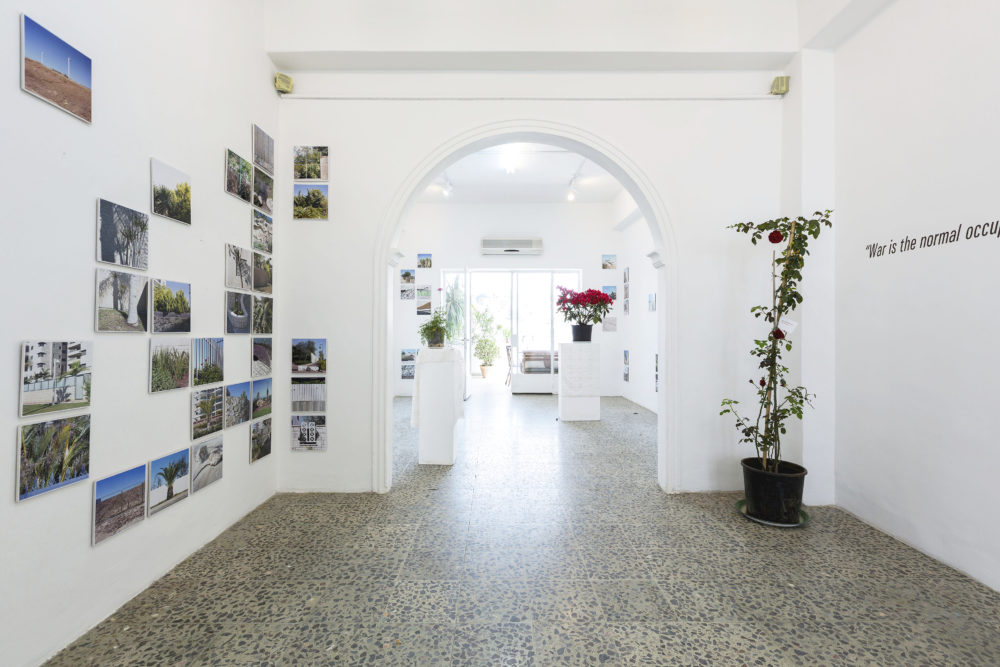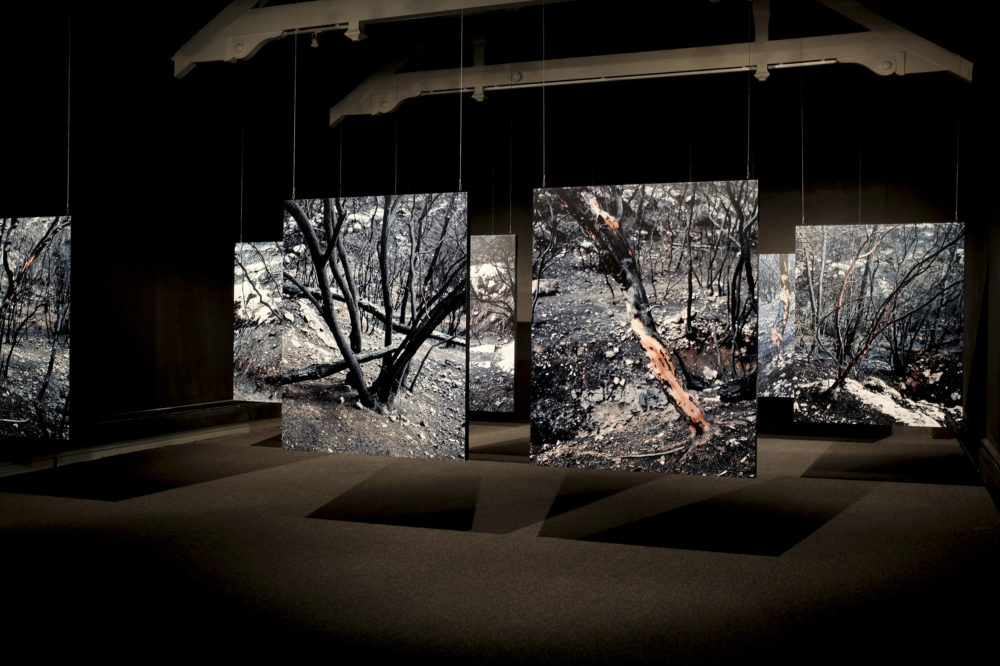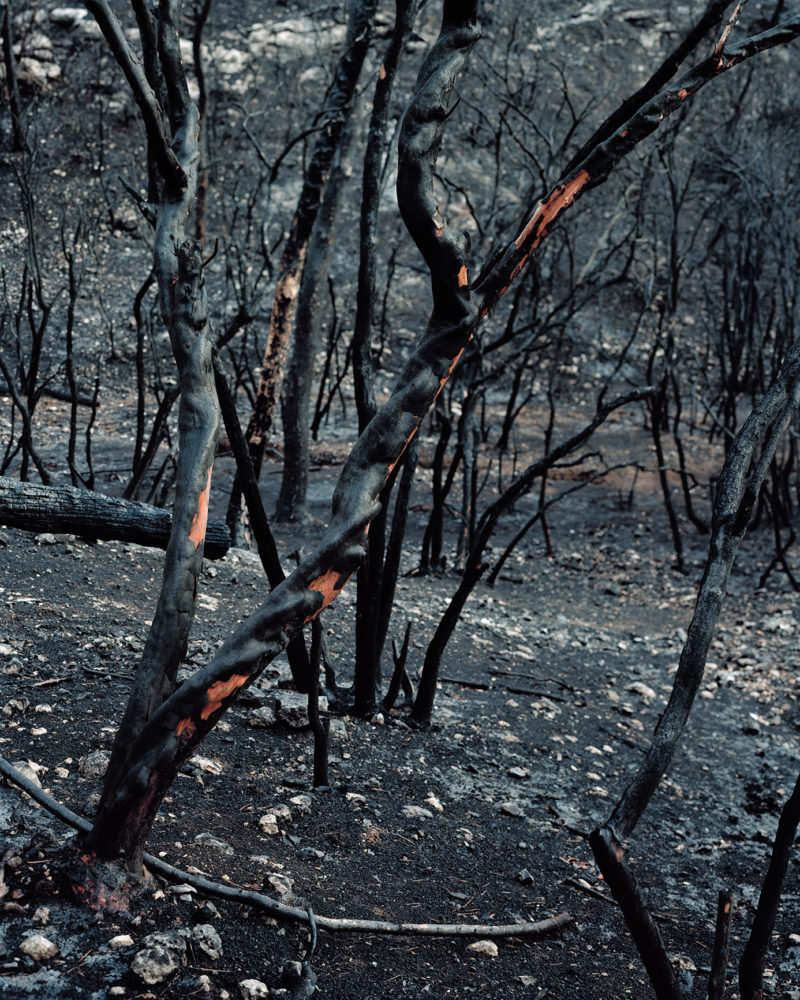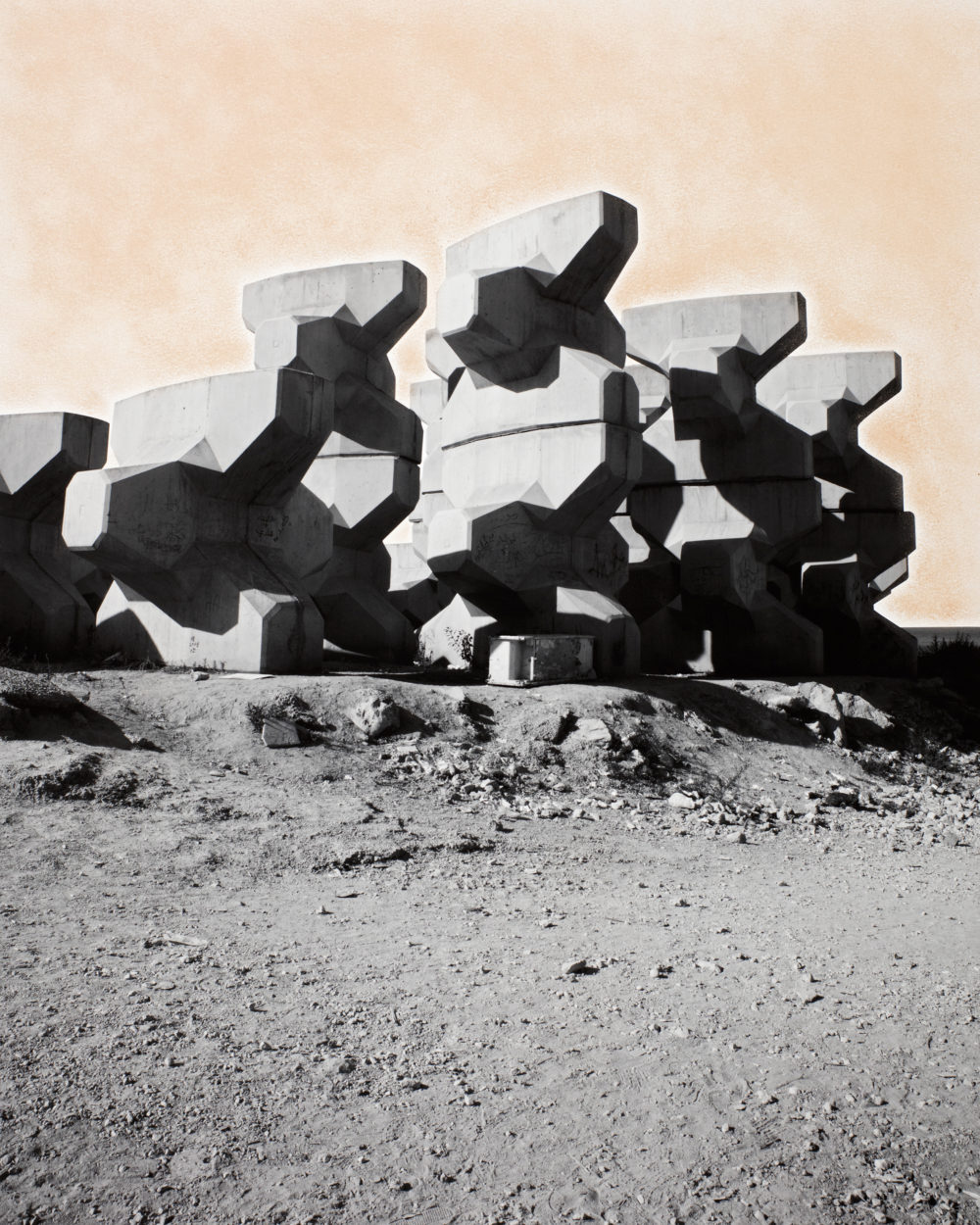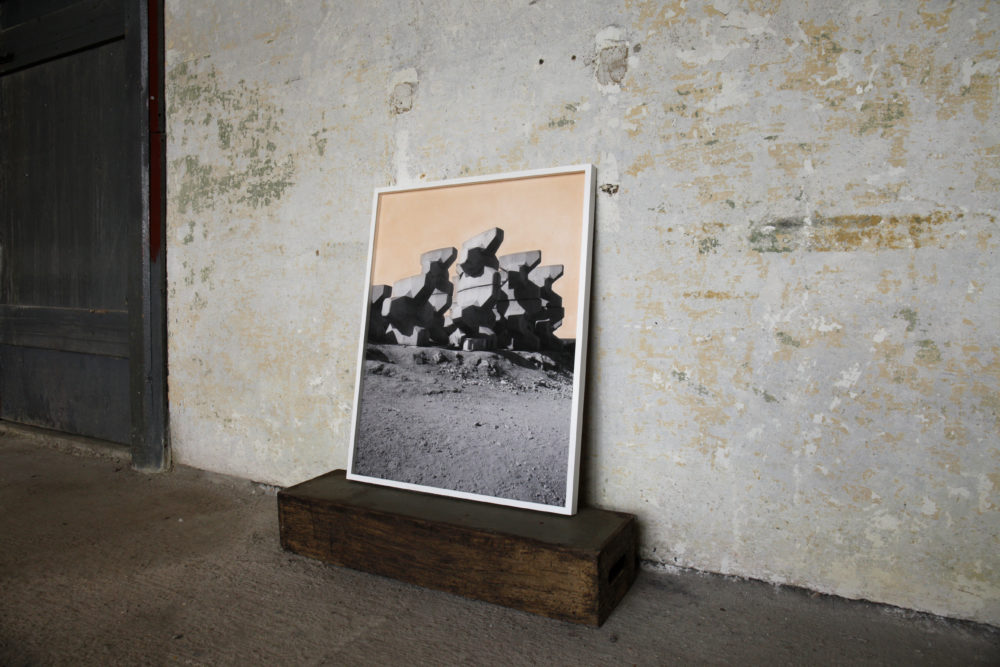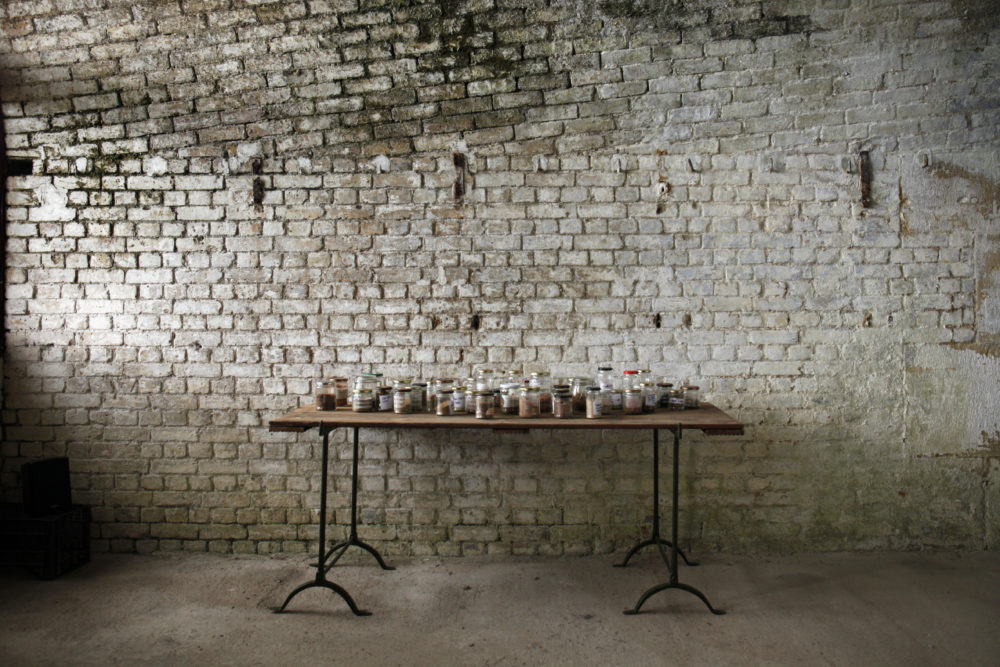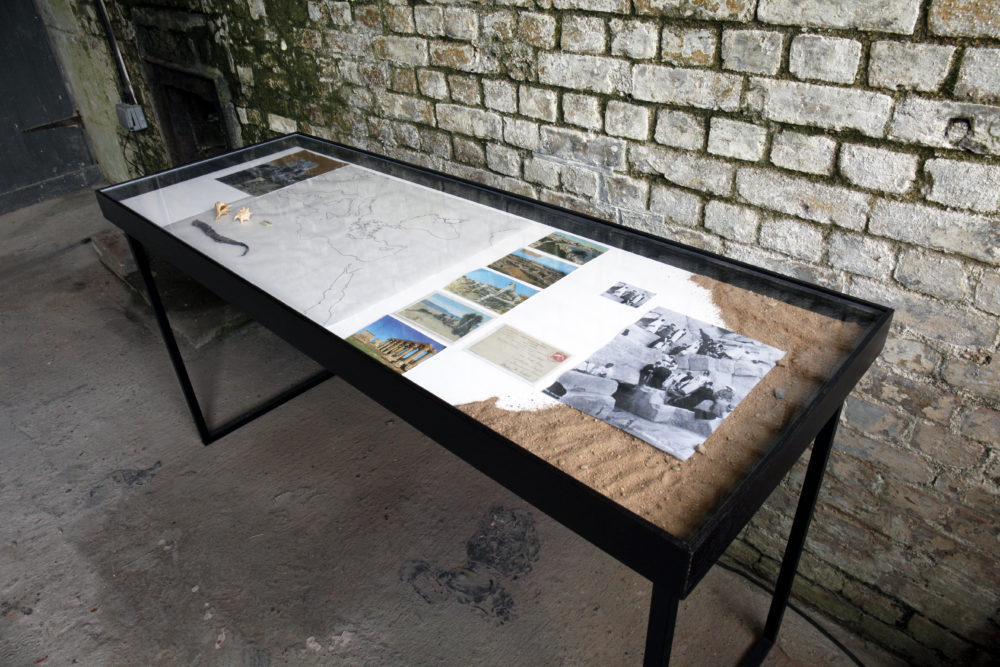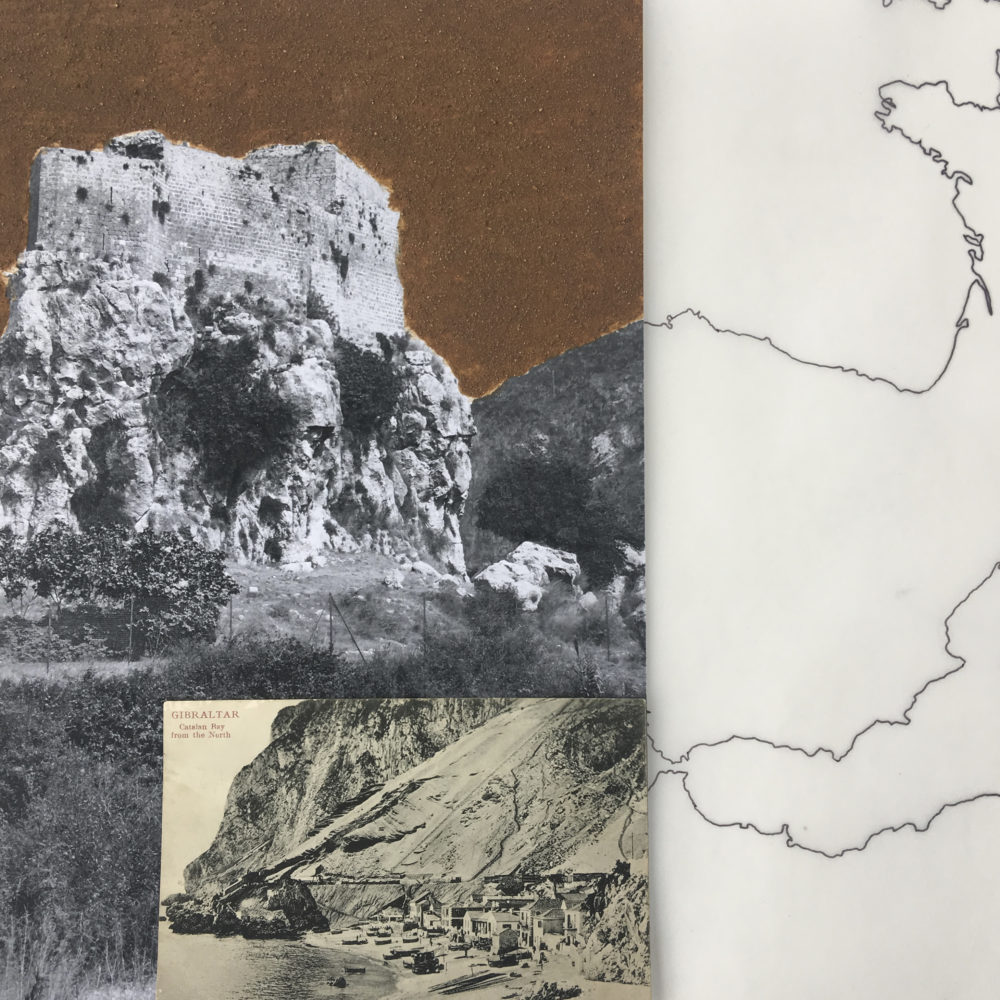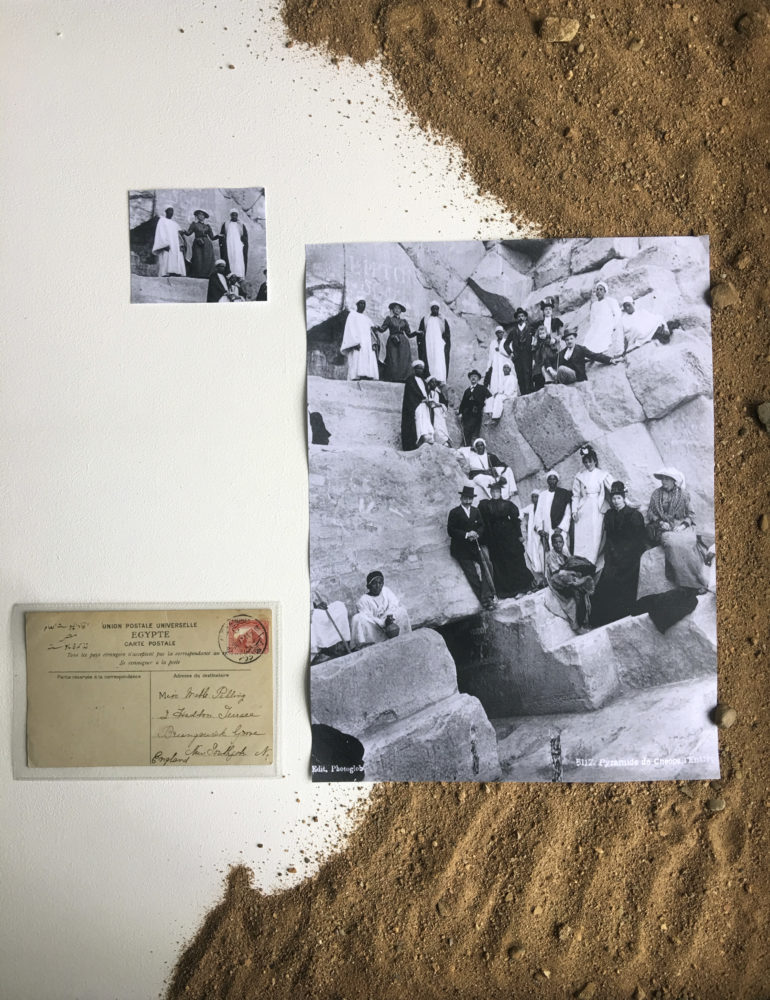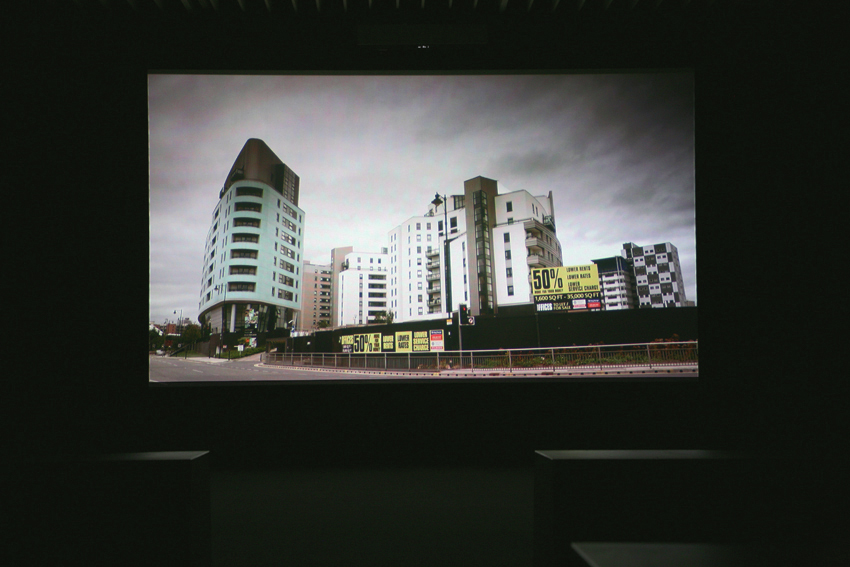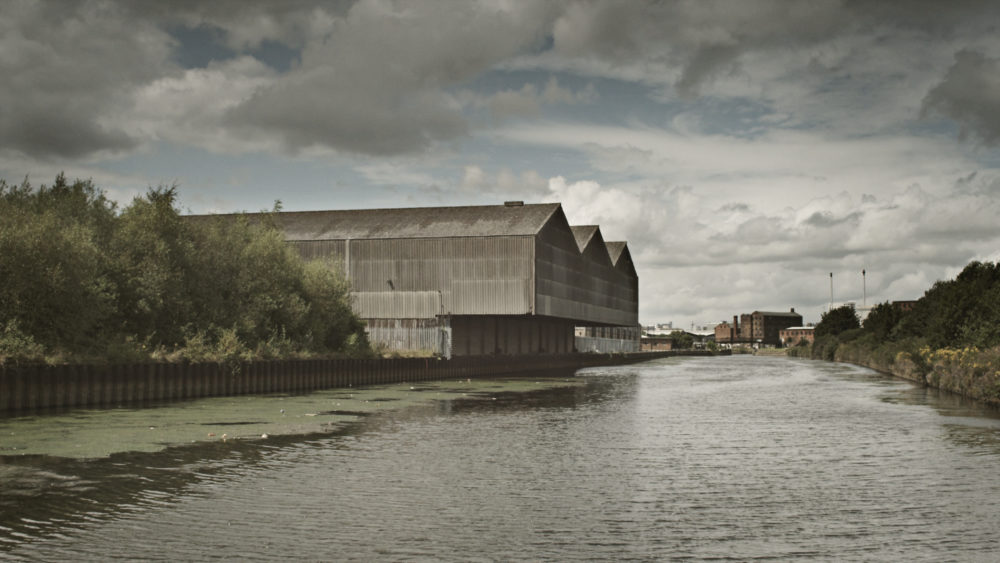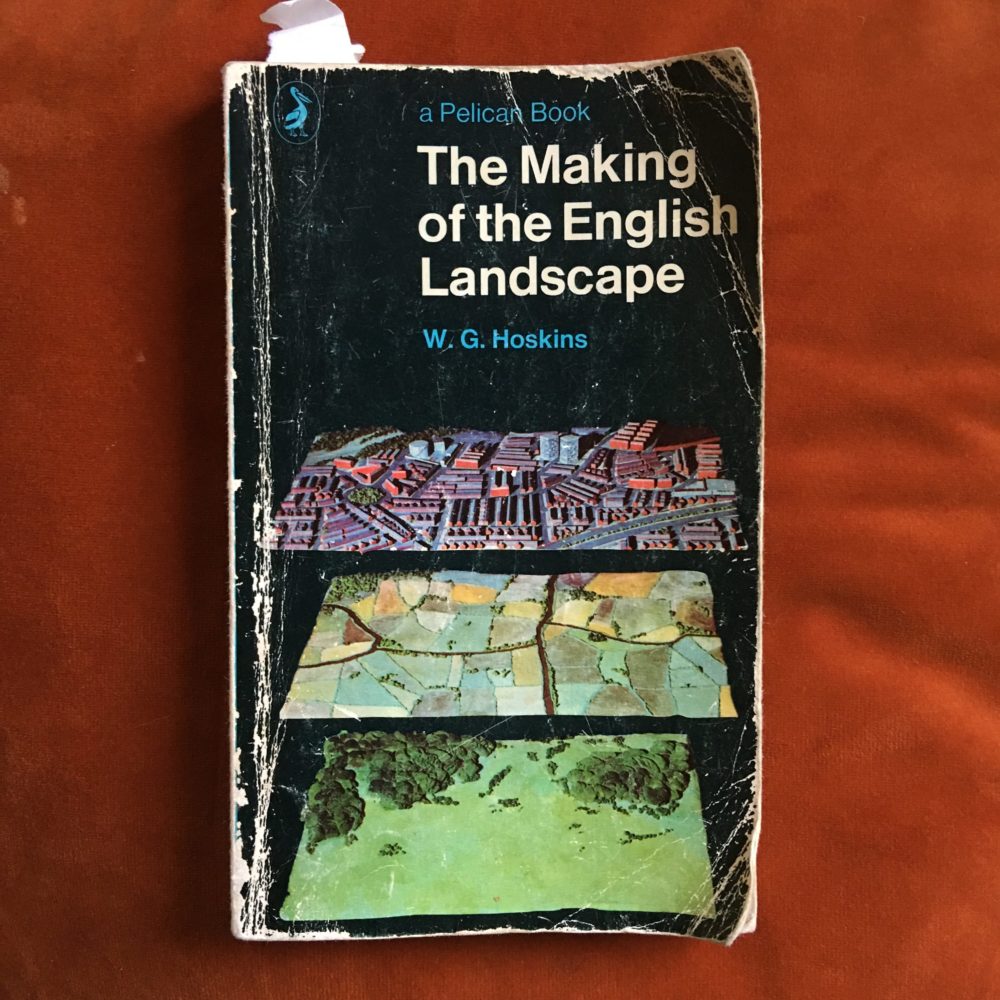Corinne Silva recently showed new works in the exhibition NEW: DEFENCE open 28 April 2018 at Coalhouse Fort, East Tilbury.
Curated by Gemma Padley, the exhibition brought together nine artists relating to the theme of defence, either by creating work including the site itself or in response to the fort’s rich archive of objects, documents and photographs. Artists included Tom Brannigan, Victoria Coster, Felicity Hammond, Laurynas Karmalavicius, Dafna Talmor, Alastair Thain, Michael Whelan and Samuel Zealey, including your own works.
Photoworks: For anyone unfamiliar with your work, could you describe your practice and what informs your research?
Corinne Silva: I’m interested in what the human-shaped landscape, formed through architecture and gardens, can tell us about the condition of being alive in this moment as a human, animal or plant. And in surfaces, seamlines, cracks. While my background, training and sensibility are in photography, I bring in other elements, such as video, sound, objects, performance and, increasingly, collaboration. For the past few years I’ve been working on various research projects with other artists, writers, botanists, farmers and activists.
I’ve spent the past decade or so working around the Mediterranean. For Manifesta 8, I made Imported Landscapes – site specific billboard installations with photographs that relocate northern Moroccan landscapes into Murcia, Spain. This subtle intervention in the landscape emphasised the ongoing narrative of trade, colonisation and human and plant mobility between two countries and two continents across what is now a fiercely protected European border. More recently, Gardening the Suburbs and Wounded are two room installations using photography and sound that I have shown together as Garden Sate and published in a monograph of the same name. In this work I used different strategies to consider the human domination of landscape through the act of planting. The works focus on the tactics used by the Israeli State to rename, reshape, and control the Israeli/Palestinian landscape. In all of this I am thinking about photography, its historical role in the development of a dangerous European imaginary of the Mediterranean and the Middle East, and how else it can be used, to set up new formations and relationships, to make cracks appear, to contribute to a space for alternative futures to be dreamed up.


PW: Your participation in the exhibition comes in the form of a new body of work titled Rocks & Fortresses. Can you explain the idea and motivation behind this series?
CS: Rocks & Fortresses is an odyssey, perhaps a futile odyssey, an attempt to walk every Mediterranean coastline and investigate sites of power and the condition of longing. I draw into this my abiding loves: dry, red earth and rock, and fortresses.
I drive and walk the coastlines and photograph fortresses looking out to sea: Moorish watchtowers, ruins of Phoenician castles, Crusader forts, places that could once be understood as physical manifestations of power and privilege, or fear of intrusion and attack, but which are now empty shells, facades. I collect rocks and earth from where I stand to make the images. I’m interested in the cycle of natural resource to human-made structure, of coastlines – now eroding – that form the Mediterranean, and of these buildings that are also crumbling and will eventually merge back into the land. I grind the rocks and earth I collect and, on the photographic prints, paint out the sky above the fortress with the pigment, shifting the balance within the image as I block out the sky, bearing down on the fortress with the earth, adjusting the perspective.

PW: In this new work we see a variety of different aspects from photographs, to sound installation and also the use of objects. Can you describe the installation at the Coalhouse Fort?
CS: Coalhouse Fort was built in the 1860’s to guard the lower Thames from seaborne attack, but was never needed. It was reconfigured in World War One and again not used. Now it has a role as a dilapidated, under-funded, sporadically open to the public tourist attraction. It’s too strange and cobbled together to be classed as ruin porn, and I was intrigued to see how the work would resonate in such a structure.
The framed photograph leaning against a wall, on an old ammunitions case that I found in the fort, was made on the Dalieh of Raouche beach in Beirut. Beirut has very few public parks, and people love to come and picnic on the beach. Any earth that touches the sea is, by law, part of the public domain. But that hasn’t stopped developers trying to build private beach clubs all along this coastline. The imposing structure is formed of tetrapods, concrete wave breaks, placed on the beach by one such developer to drive people away from what is legally public land. It’s the first step in a new layer of colonization of this place, but is being met by lots of protest, I’m pleased to say. The earth I used to paint out the sky in the photograph I collected from a now abandoned gold mine in Almería Spain. It can be cross referenced with the earth stored in the dozens of labelled jars positioned on a table in the exhibition.


As well as one of a series of photographs/earthworks, and the jars of earth I have collected, the installation includes a vitrine containing artefacts and historical and contemporary postcards and photographs drawn from archives, depicting rocks and fortresses in the Mediterranean, of which I’m building a vast collection.
These objects are part of my research process and reference the journey itself. Questions I have about the role of the artist, about how to deal with what is constantly changing shape, what is always out of reach, are explored through a looped sound work that resonates throughout the space. I’ve developed a monologue based on extracts of a 1952 Marguerite Duras novel, The Sailor From Gibraltar. The novel charts the journeys of a young woman who travels the Mediterranean Sea looking for her lost love, the sailor from Gibraltar. He is slippery, a shapeshifter, impossible to track down. He’s also a hero or villain depending on who is doing the describing. I’ve cut into and rewritten the text, paring it down to nothing but longing and the desire to connect, alongside the potential to change form, to disappear in a puff of smoke, to never be who or where we think you are.


PW: Can you talk to us about the process of starting a new body of work? Your practice is heavily research based and requires a certain amount of testing and exploration it seems. What might this process include?
CS: Every work evolves differently. Gardening the Suburbs was made over three years of repeated journeys to Israel/Palestine, researching and visiting numerous Israeli ‘quality of life’ settlements, followed by much consideration of how to present what is quite a cerebral work in some ways. It requires background information to be able to process it, and I also thought carefully about the context in which to present it, what events to run around the exhibitions (in Amman, London and Cardiff) to allow different audiences ways in to a complex and painful subject, and ways to connect it to their own experience.
Wounded, also made in Israel/Palestine is a much more visceral, bodily encounter, both for me and the gallery visitor. And it was made much more quickly. One site visit to make photographs of a burnt forest (and one day prior to that, sheltering in the car during a rainstorm) and then another site visit two years later when I recorded the sound of myself walking through the now regenerated landscape.


A big question for me, after making Garden State, is what I expect an artist or an artwork to be able to do, to achieve. I’m not using photography to ‘reveal the invisible’. Instead, I want to explore the notion and nature of longing, of pursuit. This process of testing and research you mention in your question remains present Rocks & Fortresses. It’s there in the sound piece, washing over everything you look at and touch in the space.
PW: Historically, your work explores the boundaries of modern storytelling with the inclusion of video alongside your photographic works. Can you explain your interest in the combination of different mediums in your practice?
CS: In works such as Wounded I’ve used sound with photographs to create an immersive installation, that is felt as much as looked at and in Imported Landscapes I was interested in how the format of the work, billboards in the landscape, could suggest the moment beyond, above, below, behind the frame, stretching what photography can do – how it can become almost moving image, reminiscent of the screen of the drive-in movie, in which you are always aware some action is taking place, beyond the border of the frame.


Moving image was needed to relate a fractured, broken, cross-wired narrative relating to the life and death of David Oluwale, described in my video work, Wandering Abroad. It needed music and people, and those people needed embodied voices.
Each work has its own life and what I feel to be its correct manifestation. I’m interested in the presence of the photograph or video as much as the presence of any other object. And I’m more and more immersed in writing as part of my practice. The process of adapting Duras’s text was a joy – a way to enter into it much more deeply.

PW: Finally, what’s next for you?
CS: In June 2018 I’ll be showing a further iteration of Rocks & Fortresses in group shows in museums in Catalunya and Murcia, Spain. Then later this year my work Badlands will be included in a major group show at Institut Valencià d’Art Modern, travelling to the Museum of European and Mediterranean Civilisations in Marseille.


I’ve just received some funding from the Paul Mellon Centre for Studies in British Art to further a project with writer and curator Val Williams. We’re embarking on a series of road trips around England, following in the footsteps of local historian W.G. Hoskins, whose 1955 book The Making of the English Landscape made people aware of the possibility of accessing, and of learning to read, the vernacular landscape. He worked with F.L. Attenborough, (father of Richard and David) who was principle of University College Leicester where Hoskins taught, and a keen photographer. He provided the images for many of Hoskins’ books. We want to get a sense of what they experienced in post-war Britain, and what we encounter in a country on the threshold of Brexit. Beyond that, we want to readdress the presence (or non-presence) of the women’s road trip in the Western canon.

For more on Corinne’s work, you can visit her website here.
For more on the exhibition and the ongoing programme of events, click here. There will be further residencies and education projects as part of NEW:DEFENCE coming up this summer, including a publication available now.
